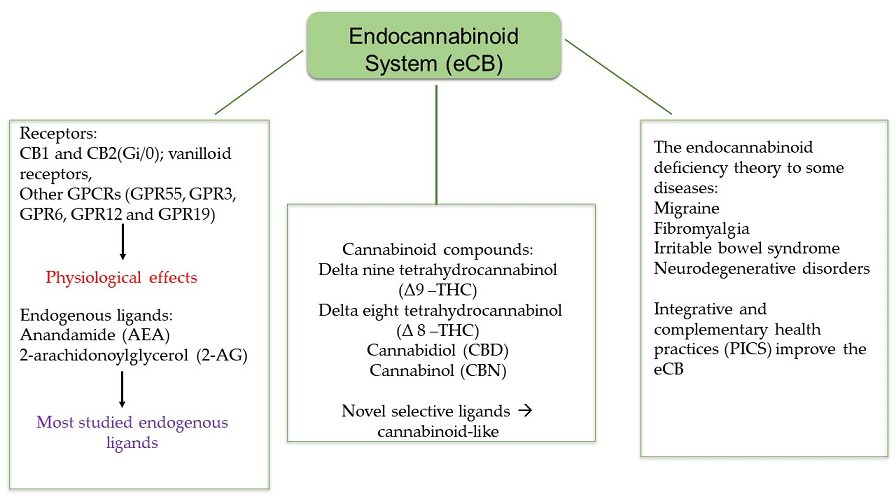The endocannabinoid system (eCB) began to be studied from the identification of the molecular structures present in the cannabis sativa plant. The ECS is constituted of cannabinoid receptors, endogenous ligands and all the associated enzymatic apparatus responsible for maintaining homeostasis. Several physiological effects of cannabinoids are exerted through interaction with various receptors such as CB1 and CB2 receptors, vanilloid receptors, and the recently discovered [GPCRs (GPR55, GPR3, GPR6, GPR12 and GPR19). Endogenous ligands such anandamide and 2-arachidonoylglycerol might modulate these receptors. eCB has proved to play a critical role in some human diseases and has been extensively studied due to its wide therapeutic potential and because it is a promising target for the development of new drugs. Phytocannabinoids and synthetic cannabinoids have shown varied affinities to eCB, which are relevant to the treatment of various diseases. They may also have potential as lead compounds in the development of cannabinoid-based pharmaceuticals for a variety of diseases. Furthermore, Integrative and Complementary Health Practices (ICHP) appear to influence the endocannabinoid system through modulation. This review will show a description of ECS components and discuss how phytocannabinoids, other exogenous compounds, and PICS may operate the eCB balance.

